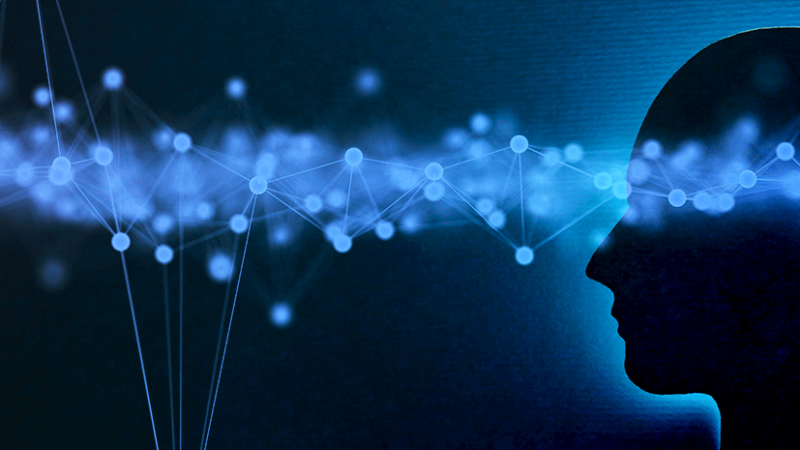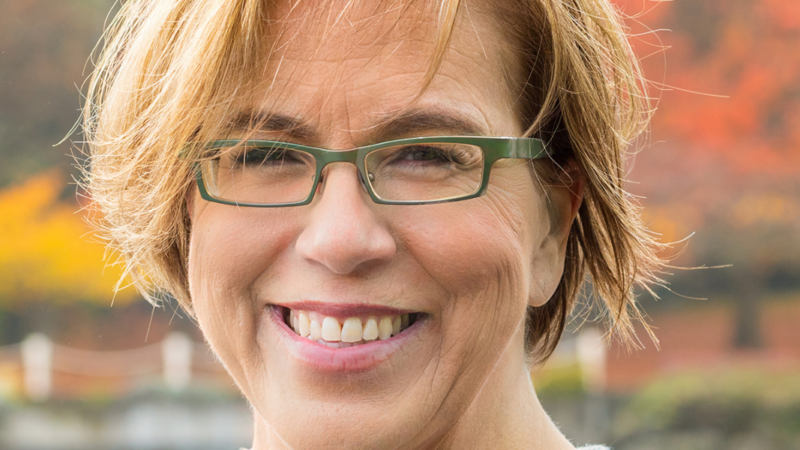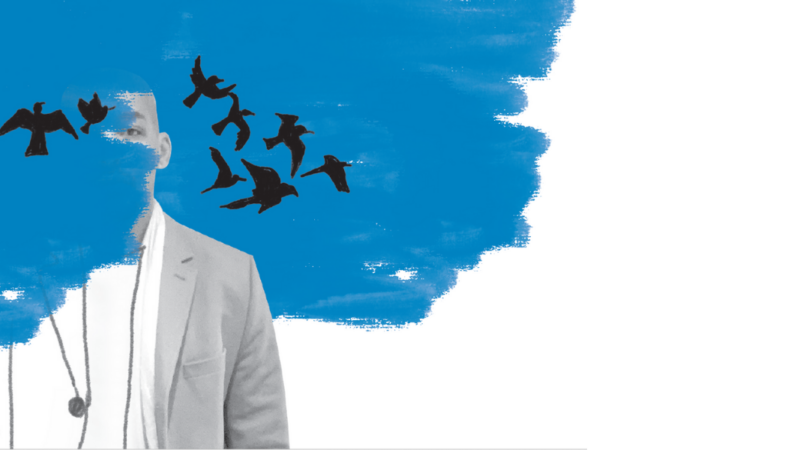Being in Love with the World

In Love with the World
There is no end to love. We may tear ourselves away, or fall off the cliff we thought sacred, or return one day to find the home we dreamt of burning. But when the rain slows to a slant and the pavement turns cold, that place where I keep you and you and all of you—that place opens, like a fist no longer strong enough to stay closed. And the ache returns. Thank God. The sweet and sudden ache that lets me know I am alive. The rain keeps misting my face. What majesty of cells assembles around this luminous presence that moves around as me? How is it I’m still here? Each thing touched, each breath, each glint of light, each pain in my gut is cause for praise. I pray to keep falling in love with everyone I meet, with every child’s eye, with every fallen being getting up. Like a worm cut in two, the heart only grows another heart. When the cut in my mind heals, I grow another mind. Birds migrate and caribou circle the cold top of the world. Perhaps we migrate between love and suffering, making our wounded-joyous cries: alone, then together, alone, then together. Oh praise the soul’s migration. I fall. I get up. I run from you. I look for you. I am again in love with the world.
Journal Questions to Work With
These journal questions have been gathered over the years from my own exploration of journaling and from my work as a teacher. They are starting points, dive spots if you will. Feel free to change them, combine them, undress them, and to voice questions of your own that these might stir, questions that might feel more relevant to what you’re going through. These questions are invitations to better know yourself and to better relate to the currents of life. Each is a chance to personalize all that we have to face.
- Describe your commitment to the ones you love. Under what conditions would you stop loving?
- What kind of care is necessary to create love, maintain love, and protect love?
- Describe the combination of care, freedom, knowledge, and need that makes up the kind of love you value? How is this different from the love you feel able to give?
Looking for more great reads?
Excerpted from Things that Join the Sea and the Sky by Mark Nepo.
 Mark Nepo is a poet and philosopher who has taught in the fields of poetry and spirituality for over 35 years. A New York Times #1 bestselling author, he has published 13 books and recorded eight audio projects. Mark has been interviewed twice by Oprah Winfrey as part of her Soul Series radio show, and was interviewed by Robin Roberts on Good Morning America. As a cancer survivor, Mark devotes his writing and teaching to the journey of inner transformation and the life of relationship. Mark’s work is widely accessible and used in spiritual retreats, healing and medical communities, and more. His work has been translated into 20 languages, and he continues to offer readings, lectures, and retreats.
Mark Nepo is a poet and philosopher who has taught in the fields of poetry and spirituality for over 35 years. A New York Times #1 bestselling author, he has published 13 books and recorded eight audio projects. Mark has been interviewed twice by Oprah Winfrey as part of her Soul Series radio show, and was interviewed by Robin Roberts on Good Morning America. As a cancer survivor, Mark devotes his writing and teaching to the journey of inner transformation and the life of relationship. Mark’s work is widely accessible and used in spiritual retreats, healing and medical communities, and more. His work has been translated into 20 languages, and he continues to offer readings, lectures, and retreats.
Healing the Trauma that You Don’t Know You Have
Most people living today are more traumatized than they know. But how could that be?
When we experience very distressing events, our nervous system goes into a state of overwhelm (or what neuroscientists call dysregulation). You may end up feeling less like yourself, unable to have a healthy range of experiences, but can’t easily connect the dots mentally or heal emotionally. It’s not your fault that this happens—it’s your nervous system’s built-in way of protecting you, and it happens outside your conscious awareness.
However, you can learn to recognize the effects of trauma. You can follow those threads through the maze of your past, to find ways of healing in the present that will improve your health mentally and emotionally.
Types of Trauma
While individuals differ in their responses, there are broad categories of trauma that we should all know exist: childhood trauma, racial trauma, sexual trauma, religious trauma, narcissistic abuse, war, pandemics and other natural disasters, and intergenerational trauma. Three of these types are briefly covered below.
Childhood Trauma
No family is perfect, but some do active harm. Too often, children suffer neglect and physical, sexual, or emotional abuse, often with no outside resources to protect them. Childhood trauma can also happen if the mother is treated violently, someone in the family has substance abuse problems or a mental illness, the parents are going through a divorce or separation, or one of the parents or a sibling dies.
In all of these situations, because a child’s nervous system is not yet fully developed, the childhood trauma often goes unidentified until something triggers a memory or compounds it, years or decades later.
Narcissistic Abuse
Many of us know someone who exhibits signs of narcissism, focusing exclusively on themselves and unable to empathize with or “make room for” others. If you’ve suffered abuse by a narcissist, whether they were a parent, partner, or boss, you may no longer trust your instincts in relationships or feel guilty about things that aren’t actually your fault or responsibility. You may feel you have to be “special” to gain recognition, and you may have developed a case of perfectionism to keep away the shame that your abuser made you feel for not living up to their impossible standard.
Global Events: Pandemic Trauma and War Trauma
The pandemic put virtually all of us into a “sustained survival mode” that evoked or caused trauma. The pandemic saw a 25 percent increase in anxiety and depression, according to the World Health Organization (WHO). As a shared trauma, it also led to widespread Post-Traumatic Stress Disorder (PTSD) and burnout among health-care workers. It affected parents who had to juggle supervising their children and working from home while schools were closed. And it deeply impacted those who experienced the loss of a loved one unexpectedly to COVID, who were often not able to say goodbye in person, weaving trauma into the fabric of their grief.
The first formally identified cases of PTSD (known as “shell-shock”) were in soldiers who served during World War I. Tragically, wars have been embedded into the human experience since recorded history. No matter whether it be the recent conflict in the Ukraine, the uprising in Iran, or ongoing conflicts elsewhere, the impact on the psyche of those living in those areas is severe. As widespread violence and threats of violence go on, month after month, traumatic stress compounds for both soldiers and civilians living in warzones. Even in areas where conflict is not directly taking place, there can be trauma impressed into those living in ongoing fear of nuclear war or attack.
How Trauma Works in the Nervous System
To understand your trauma, you’ll need to get to know your nervous system and how it responds to signals of danger, real or perceived.
Over the course of human evolution, our nervous system developed three kinds of responses to threats to help us get through dangerous experiences intact. These subsystems are known as: social engagement, sympathetic mobilization, and parasympathetic immobilization systems. They usually operate below our conscious awareness, but when someone experiences ongoing distress or a trauma that doesn’t resolve, the neurological connections behind these responses get strengthened and we become “stuck” in maladaptive patterns—through no fault of our own.
When the social engagement system responds, we look for help or someone to rescue us from the situation. If this response is encouraged, we may habitually “fawn” around others, hoping to appease anyone causing us distress. We can develop too much compassion for others, leading us to forget to care for ourselves, which over time creates more stress and trauma in our nervous system.
When the sympathetic nervous system responds, we engage in “fight, flight, or freeze,” to try to figure out what to do with the threat (freeze), then to subdue it (fight), or else escape it (flight). When this system is “stuck” in overdrive, we may have problems like depression, anxiety, or phobias.
If all other tactics fail, the parasympathetic nervous system can still put us into a collapsed, shut-down state (“faint”), as a way to survive with the least possible amount of damage when fighting or fleeing aren’t possible. This state is linked to depression and dissociation.
Symptoms of Trauma and PTSD
If you’ve sustained any form of trauma in the past, you may experience various difficulties, depending on the way the trauma got stuck in your system:
- Anxiety or Panic Attacks
- Denial
- Feeling emotionally numb or hopeless
- Hypervigilance
- Difficulty connecting with others
- Overwhelming shame or guilt
- Aggressive behavior
- Self-destructive behavior
- Addictions
- Insomnia and dysregulated sleep
- Flashbacks
Another way to determine whether you’ve dealt with trauma is to think about how you show up in a relationship. Do you enjoy some of your interactions with others, or do you often feel inner pressure around everyone you meet? Do you feel nurtured by one or more people in your life, or do you feel responsible to everyone, all the time? Do you feel uncertain around your loved ones, like you’re not really sure you can rely on them?
When we’ve experienced trauma in a past relationship, be it with a neglectful parent, an erratic partner, or an abusive boss, our nervous system tracks the impact, and it affects our present relationships—until we shed light on what’s happened and learn how to work through its effects on us.
Treatments for Trauma
In the last few decades, neurobiology has blossomed and cross-pollinated with psychology. New discoveries have been made, new theories have been tested, and thankfully, a range of therapies and treatments for trauma have been developed to help us cultivate deep self-regulation. Among them are somatic therapies such as Somatic Experiencing and sensorimotor psychotherapy, trauma-focused Cognitive Behavioral Therapy and Cognitive Processing Therapy, Eye Movement Desensitization and Reprocessing (EMDR) and “brainspotting,” and trauma-informed psychodynamic therapy.
Therapy is a wonderful option, but if you’ve been through individual therapy or want additional support, there are other ways to learn skills to work through trauma.
By committing to your own healing, you’ll not only create greater balance in your life, you will stop trauma from being passed on to the next generation—and you’ll bring a healing presence into the world.
If you’d like support in your commitment to healing trauma, you can check out The Healing Trauma Program, hosted by Jeffrey Rutstein, PsyD, CHT.
Meet the author of . . . P.S. I Love You More Than Tuna
The Author
Sarah Chauncey is the coauthor of P.S. I Love You More Than Tuna along with illustrator, Francis Tremblay, coming October, 2020. She has written and edited for nearly every medium over the past three decades, from print to television to digital. Her writing has been featured on EckhartTolle.com and Modern Loss, as well as in Lion’s Roar and Canadian Living. She lives on Vancouver Island in British Columbia, where she divides her time between writing, editing nonfiction, and walking in nature. Learn more at sarahchauncey.com.
The Book

Our cats occupy a unique space in our hearts. When they’re gone, the loss can be devastating, the grief profound.
P.S. I Love You More Than Tuna gives us an opportunity to give friends, loved ones, or ourselves tangible comfort during the grieving period, when so many of us feel isolated and misunderstood after a beloved pet dies.
Send us a photo of your sacred space.
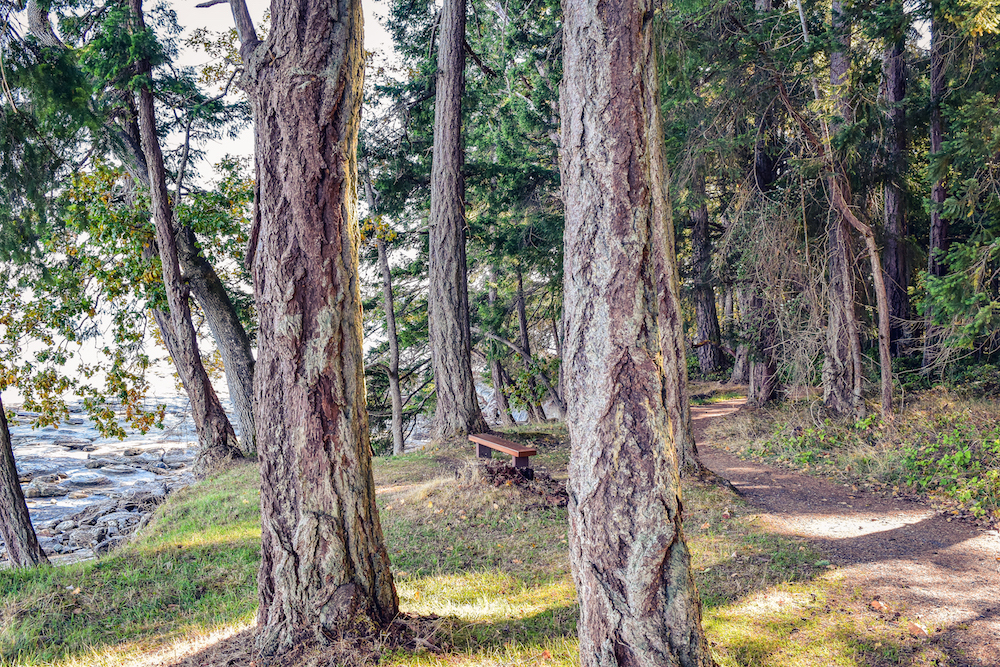
First Nation, Saysutshun Newcastle Island is an ancient forest and marine provincial park. Saysutshun, I’m told, means “training or preparation ground,” and indeed, for millennia before colonization, the Snuneymuxw brought healers to this small island to train “mentally, physically, and spiritually.” I knew none of this history when I first began walking long stretches of the uninhabited island’s 13.6 miles of trails. I only knew that the island seemed to lift away anything that wasn’t essential, easing my mind and making way for creative ideas to flow. I’d walk a bit, then sit and meditate, write for a while, then walk some more. This bench, under a circle of seven trees, became my favorite writing and meditation spot. The moss-covered trees became my friends, teaching me to stay rooted when things around me change. As I wrote in a 2016 essay about the island, “I have become a literal tree-hugger, and even—when nobody is looking—a tree-kisser.”
What was your favorite book as a child?
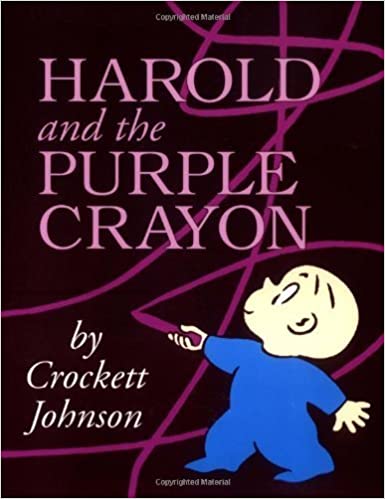
I was a total bookworm as a child. Instead of playing games at recess, I preferred to curl up under my desk and read. Of all the books I read—from every Encyclopedia Brown to Freaky Friday to The Short Stories of Ernest Hemingway (I was a precocious kid), the book with the most enduring impact was also the simplest: Harold and the Purple Crayon. I was enchanted by Harold’s adventures, amazed by his ability to draw his way out of every obstacle and ultimately find his way home. Long before I began seeing this as a metaphor for creativity (and life!), this story appealed to me. Fifty years later, I continue to find new layers of meaning in this little book. It’s a simple yet profound testament to the power of imagination and creativity.
What is one unexpected thing or habit that inspires your writing practice?
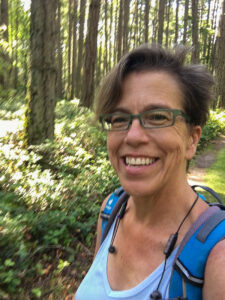

Walking in nature is my creative “secret sauce” and the central practice to my writing. Several years ago, I realized that although my role in this world is as a writer, my job is to bring myself back into presence, over and over, to get into a place where words can flow through me. I walk to get out of my mind and into my body. I come into fierce presence by noticing the rain on my face, salal berries ripening into deep blue, or the texture of earth beneath my feet. When my body is occupied by walking, ideas bubble up from my subconscious. Whether I’m looking for ways to trim an over-long essay or searching for words to evoke a hard-to-articulate experience, as soon as my legs find their rhythm, ideas begin to flow.
Learn More

Sounds True | Amazon | Barnes&Noble | Bookshop | Indiebound
An Evening with Pema Chödrön and k.d. lang
Bestselling author and beloved meditation teacher Pema Chödrön has touched the lives of millions with her down-to-earth guidance for becoming happier, “saner” people in an ever-changing and challenging world. Grammy®-winning recording artist and Buddhist practitioner k.d. lang has likewise been a source of inspiration worldwide through her music, songwriting, and soaring vocals.
Learn more and purchase tickets here!
An Evening with Pema Chödrön and k.d. lang is a once-in-a-lifetime opportunity to join these two extraordinary women who are both uniquely gifted “instruments of the dharma,” helping us to soften and open our hearts. Moderated by Sounds True publisher and founder Tami Simon, this night of discovery and insight will support both The Pema Chödrön Foundation and Tools for Peace.
Our evening will begin with a dialogue with Pema Chödrön, who will share her insights into life’s “big questions”—including how we can begin to face uncertainty and engage the unknown—along with practical guidance in becoming more vulnerable, authentic, and present with ourselves and with each other. Then k.d. lang will join the conversation, speaking about her personal approach to creativity and the roles that trust, devotion, and surrender play in that process, the surprising parallels between the journeys of the artist and the meditator, and more.
Our evening concludes with a special musical performance by k.d. lang, who will offer a selection of songs with a piano accompaniment, buoyed by the incredible acoustics of Royce Hall.
Learn more and purchase tickets here!

Five Dos and Don’ts for the Minimalism-Curious
My recent book Travel Light is a how-to guide for the practice of what I call “Spiritual Minimalism,” which is not to be confused with regular old minimalism.
Long story short, in 2018, I was living in a beautiful two-bedroom apartment in Venice Beach when I felt an inner calling to get rid of everything that didn’t fit inside of my 22-inch carry-on bag. My bag would effectively become my new apartment as I would begin living nomadically around the world.
It took me 30 days’ worth of yard sales and Craigslist posts to get rid of over four decades of furniture, art, photo albums, yearbooks, letters, clothing, knickknacks, winter coats, books, my cars, Vespa, and everything else.
And about six months into my nomadic journey, I realized something: I still had too much stuff. So I got rid of the carry-on bag and downsized into a backpack. And now, five-plus years later, I’m still happily living from a backpack as I continue to hop around the world, from hotels to Airbnbs to friends’ extra bedrooms.
Travel Light is written for those who also feel called to live with less, but you’re not sure where or how to start. Truth be told, there are numerous ways to start, depending on your individual situation.
If this approach intrigues you, I want to share five common mistakes many new minimalists make—and a handful of simple recommendations to get you started on a more mindful, purposeful minimalism journey:
Don’t get rid of too much too fast
Although I completely emptied my entire two-bedroom apartment within 30 days, I had been intentionally prepping to live from a carry-on bag over the previous year by experimenting with taking only what I actually used while on my dozens of work trips. So in 2018, getting rid of my stuff was merely the final step in a long progression of steps.
My first recommendation is to go slow. Decide what sort of end result you desire, and start experimenting with what it would be like to only use what you envision keeping. Maybe get a storage room and put a handful of items in it each week until you run out of things you don’t use. Otherwise, going too fast could prove to be unsustainable and discouraging.
Don’t make it about the external space
Getting rid of clutter doesn’t resolve deep emotional wounds or past trauma. And some of that could be the root cause of why you engage in retail therapy or why you may cling to stuff you don’t use or wear. And until you start doing deeper work on yourself, you can live in the most minimal-looking setting, but still feel cluttered inside.
Commit to daily meditation as a means of efficiently releasing stress, and engage in other inner work, such as therapy, journaling, seva (service), and daily gratitude practices to clear away the internal clutter. This is what is meant by Spiritual Minimalism. It’s minimalism practiced from the inside-out.
Don’t treat minimalism as a one-time experience
Minimalism is less of an act, like Spring cleaning, and more of a lifestyle, like getting into shape. It doesn’t end once you get rid of your stuff. Like being in shape, minimalism continues to inform what you do, how you do it, where you go, why, and pretty much every other choice you make in life. In other words, you recognize that every choice you make is either supporting the lifestyle or taking away from the lifestyle.
Start seeing everything you do (big and small) as an opportunity to reinforce the minimalist mindset, and make choices that support your desired mindset.
Don’t forget to adopt a larger purpose
Getting rid of stuff for the sake of looking like a minimalist is ultimately unfulfilling, and it’s recommended to adopt a larger purpose for your minimalism adventure. That way, you will bring more enthusiasm and passion into your minimalism choices. You’re not just getting rid of something for the sake of getting rid of it. It’s going to help you by making space to exercise, create content, or to use as the meditation corner of your home.
My recommendation is to answer this question: How does becoming a minimalist help you help others? The answer is a clue into your purpose, and just know that there is no wrong answer. Or rather, it’s an ever-evolving answer that will come into greater focus as you begin your journey. All you need for now is a loose idea of your why.
Don’t compare yourself to others
The quickest way to make minimalism a drag is to compare yourself to other, more popular minimalists. It’s certainly good to be informed of best minimalism practices and get tips from minimalist influencers, but their paths or suggestions may not work as well for your situation.
Be open to blazing your own path into minimalism, and be willing to adjust along the way. If you treat the entire thing as a learning experience, there are no mistakes. And you’ll have a lot more fun along the way.
For more tips and insights on the ways of the Spiritual Minimalist, I invite you to check out Travel Light: Spiritual Minimalism to Live a More Fulfilled Life.
Light Watkins
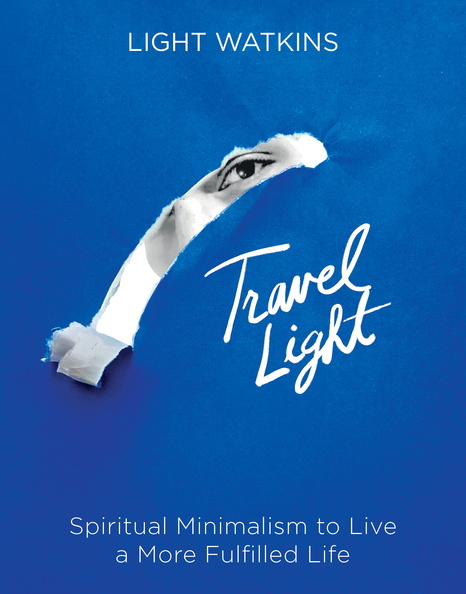
Learn More
Amazon | Barnes & Noble | Bookshop | Sounds True
The Untethered Soul At Work

I am honored to have this opportunity to share with you a topic that is very dear to me: work. We spend nearly half of our waking hours at work. Because of this, many of us seek a workplace that supports our personal/spiritual aspirations. This generally translates into searching for a job that is “people friendly.” Regardless of where you work, however, there are going to be situations that don’t align with your concepts, views, and preferences. When that happens, some people think it’s time to move on and find an environment that better suits them.
The Untethered Soul at Work presents a real paradigm shift from this way of thinking. Spiritual growth is always about change and transformation, but this does not mean changing the outside—it means changing the inside. A truly spiritual approach to our time at work is to see it as a phenomenal opportunity to go through the changes we need to go through to become more open and accepting. In the end, peace doesn’t mean finding a limited, controlled environment that does not hit our “stuff”—it means using our everyday environment to let go of our stuff so that we can be unconditionally peaceful.
When we approach work as an opportunity to express ourselves as well as to remove the inner blockages that keep us bound, we truly make work a holy place. The Untethered Soul at Work guides us and encourages us to view the challenges in the workplace as opportunities to grow spiritually. Many examples are given of how to face everyday situations so you come out the other side a more liberated person. When at the end of every workday you are a greater person than you were in the morning—you have used your day well. When you have reached the state where you are enthused to come to work every day for the challenge of letting go of your blockages—work becomes a win-win situation. You cannot lose—every experience is for your spiritual transformation.
We cannot always change our environment, but we can change how we interact with it. True mindfulness means staying centered and clear enough to use every moment life presents you to free yourself from yourself. Work is always a spiritual place—if you learn to use it that way.

Michael A. Singer is the author of the #1 New York Times bestseller The Untethered Soul: The Journey Beyond Yourself. In 1971, while pursuing his doctoral work in economics, he experienced a deep inner awakening and went into seclusion to focus on yoga and meditation. In 1975, he founded Temple of the Universe, a yoga and meditation center where people of any religion or set of beliefs can come together to experience inner peace. Through the years, he has made major contributions in the areas of business, the arts, education, healthcare, and environmental protection. For more information about The Untethered Soul®, please visit untetheredsoul.com.

Listen to The Untethered Soul At Work wherever you buy your audiobooks!
Sounds True | Amazon | Audible





